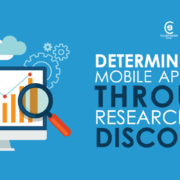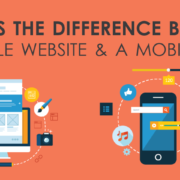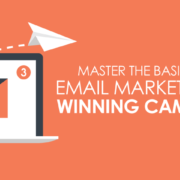Develop a Winning Marketing Plan for Your Business Mobile App
If you decide to develop an app, it’s important you don’t fall into a “Field of Dreams” syndrome. That famous movie brought us the line “If you build it, they will come.” Keep in mind; they were referring specifically to a baseball field in the middle of a farm! If that’s not what you’re doing, forget all about that advice forever. For the rest of us, marketing is required to gain traction. In the world of mobile apps, you have to go out and find users!
Put Your App in the Forefront of Your Online Marketing Initiative
The strongest move to make is tying your app into all of your current online efforts. Media companies have been doing this for years. Websites that were once newspapers now have millions of users for their apps. They grew their audience by suggesting their mobile application often. The same strategy is one for you to use as the foundation for your efforts. Leverage, your current customers to help you develop an audience of mobile users.
Stand out from the Crowd
Originality pays when it comes to app design. Most ideas have already been seen, making it nearly impossible to stand out. If your app is a “me too” offering, you’ll struggle to find virality. You may not be able to come up with something entirely new. That’s nearly impossible in most cases. However, putting a twist on an idea is a way of creating an offering with sufficient differentiation. A unique take on even a traditional subject contains enough originality to create market demand. Put your thinking cap on and outline what it is that makes your application different.
Harness the Power of Social Networks to Market Your App
Social media marketing is your friend when you need to market an app. Users in every imaginable demographic inhabit the large social networks. You can find your perfect prospects by creating and distributing content that helps them decide to use your application. One of the most impressive aspects of social media marketing is that it helps people quickly endorse and recommend things they love. If they like using your application, they’ll notify friends.
Prepare an Unbeatable Elevator Pitch
Have your 15-second elevator pitch ready for everyone. It’s crucial that you’re able to outline the benefits or your app fast. People are known for their short attention spans these days. Bore them at your peril! If they don’t “get” what you’re all about quickly, they’ll move on. Even 15 seconds might be too long. Shorten your pitch to even less if you can. Look at the impact that “ride-hailing” apps have had on the world. That show a two-word description does a perfect job of exposing the main feature of the app. Think along those same lines and you’ll be able to sell a download to just about anybody. People always want to know what’s in it for them.
Never Forget Branding
Marketing your mobile application requires a strong branding effort. The fastest way to gain attention in a marketplace is a strong brand. The world’s most famous ones dominate due to their inherent strength. You aren’t looking to convince everyone in the world to try your app. Instead, focus on defining your targets as precisely as possible. Don’t underestimate the importance of having a catchy name and tagline! People love extraordinary brands, so it’s worth putting forth the energy to create one.
Figure out What Your Competitors Are Doing to Market Their App
It’s a smart idea to know your competition. Your mobile app is not going to be the only one of its kind. You can be sure of that simple fact. Therefore, you should take the time to study what the other companies are doing to spread their version. You may be able to incorporate some of their ideas into your overall marketing strategy. You also can spend some time differentiating your offering from theirs. One of the most common questions prospects wonder, “why should I choose this one over another?” Make sure it’s clear to them why your download is the superior one.
Understand the Subtleties
Android and iOS apps require different types of marketing strategies. Android apps can be uploaded free to large vendors, which is fantastic. However, since it’s free, expect lots and lots of other apps to be there already. Apple listings cost hard earned money, meaning you have to make back more money for the efforts. You may decide to combine both kinds of apps for the widest possible audience. If you understand demographics, you’ll see patterns emerge. Your typical users are going to have many things in common. Refine these people’s characteristics to the point where you’re able to target people quickly and then consider paid placements. You can advertise apps just about everywhere mobile users hang out.
Don’t Forget the Importance of Quality
Apps that function poorly or look bad won’t get anywhere. You have to be a stickler for high quality. Hire a professional developer who knows the business inside and out. There are many new app developers out there who just don’t have the experience needed to produce quality, useful mobile apps. It’s tempting to give them a try, but resist the urge and go with professionals. Once your app is out there, the last thing you want is to deal with bugs. With the right team and framework in place, your user base will flourish. You won’t need to go back and tweak any poor code or fix bugs! Stick with the best development and the rewards will be enormous.
Making a mobile app is a significant step towards effective mobile marketing. The best apps fit in with your other initiatives, strengthening your branding and selling. With a comprehensive marketing strategy in place, you’ll see the types of results other companies only imagine in their dreams. Apps deliver a high degree of prestige along with their other benefits. Your business will stand out from others due to technological innovation. In today’s increasingly competitive environment, every little bit helps.

I’m a Digital Marketer & Freelance Writer with a penchant for all things forward-thinking and positive. I’m a fan of abundance and progress.






